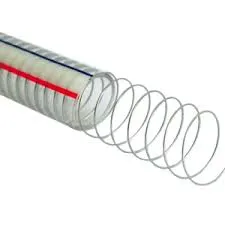fiber pvc
The Rise of Fiber PVC A Comprehensive Overview
In the quest for sustainable and durable construction materials, Fiber PVC (Polyvinyl Chloride) is gaining significant attention in various industries. This innovative material combines the aesthetic and functional properties of fiber elements with the robust qualities of PVC. As a result, Fiber PVC is emerging as a preferred choice for various applications, from flooring to siding and beyond.
Understanding Fiber PVC
Fiber PVC is essentially a composite material that incorporates fiber, usually cellulose or glass, within the PVC matrix. This combination results in a product that boasts enhanced strength, flexibility, and thermal insulation properties. The fibers lend the material additional rigidity and toughness, making it ideal for heavy-duty applications, while the PVC offers a resistance to moisture, chemicals, and UV degradation.
The manufacturing of Fiber PVC involves a meticulous process where the fibers are mixed with PVC resin and other additives. This mixture is then extruded into various shapes and sizes, allowing it to meet the specific requirements of different industries. The versatility of Fiber PVC is one of its most appealing features, enabling it to take on myriad forms, including panels, tiles, and even piping.
Applications in Construction
One of the most prominent uses of Fiber PVC is in the construction sector. Builders and architects are increasingly favoring this material for flooring, wall cladding, and roofing. The combination of fibers and PVC not only enhances durability but also provides aesthetic options that mimic natural wood or stone textures, allowing for greater design flexibility.
Moreover, Fiber PVC panels and tiles are lightweight, making them easier to handle and install compared to traditional materials. They are also resistant to water and mold, which is crucial for maintaining indoor air quality and the longevity of structures. Additionally, Fiber PVC can be produced in a variety of colors and finishes, catering to diverse design preferences.
Environmental Considerations
fiber pvc

As sustainability becomes a key concern in construction and manufacturing, Fiber PVC is well-positioned to meet the growing demand for eco-friendly materials. PVC itself is recyclable, and the incorporation of natural fibers reduces the reliance on pure synthetic substances. Many manufacturers are also exploring the use of recycled materials in the production of Fiber PVC, further minimizing its environmental footprint.
Furthermore, the long lifespan of Fiber PVC products contributes to reduced waste generation over time. Unlike traditional materials that may require frequent replacement, well-constructed Fiber PVC installations can last decades, resulting in lower overall consumption of resources.
Challenges and Limitations
Despite its many advantages, Fiber PVC is not without its challenges. One of the primary concerns is the potential environmental impact of PVC production itself. While advances are being made in making PVC recycling more efficient, the initial production process can be energy-intensive and may have associated environmental repercussions.
Additionally, the long-term durability of Fiber PVC in extreme weather conditions is still being studied. While it performs well in most climates, issues related to thermal expansion, fading, or brittleness at low temperatures can arise. Manufacturers are continually working to improve the material's performance and address these concerns.
Conclusion
Fiber PVC stands at the forefront of modern material science, offering a blend of durability, aesthetic appeal, and environmental benefits. Its growing popularity in the construction industry reflects a broader shift towards sustainable building practices that do not compromise quality or design flexibility. As research and development continue to enhance its properties and production processes, Fiber PVC is poised to play a pivotal role in shaping the future of construction materials.
As industries continue to innovate and adapt to the challenges of sustainability, Fiber PVC offers a viable solution that balances performance with environmental responsibility. With ongoing advancements in material technology and a concerted effort towards sustainability, Fiber PVC not only meets the needs of today's construction practices but also paves the way for a more sustainable future.
-
Top Quality Oxy Acetylene Hoses for Sale Fit for Welding DemandsNewsJul.28,2025
-
The Future of Pneumatic Air Tubes in IndustryNewsJul.28,2025
-
Superior and Reliable LPG Hose Pipe Solutions for Every NeedNewsJul.28,2025
-
Exceptionally Durable and Versatile Premium Braided PVC TubingNewsJul.28,2025
-
Best Adapters for Connecting Garden Hose to PVC Pipe ConnectionsNewsJul.28,2025
-
The Essential Role of LPG Hoses in Safe and Efficient Gas DistributionNewsJul.16,2025














